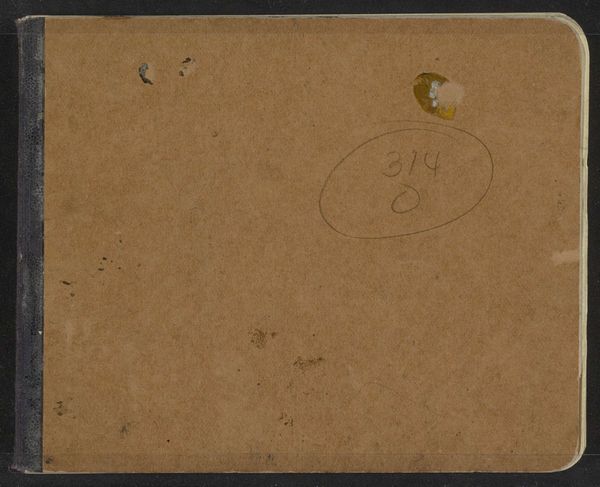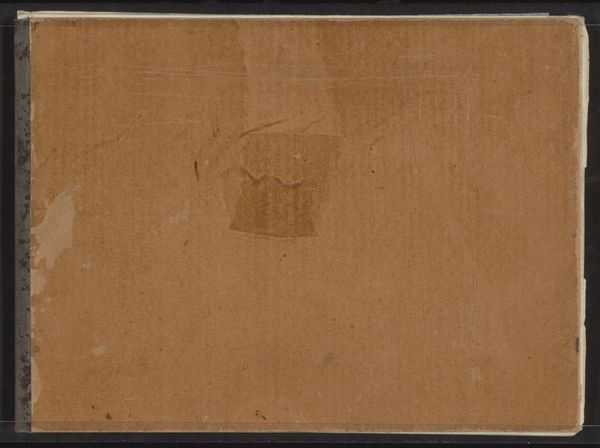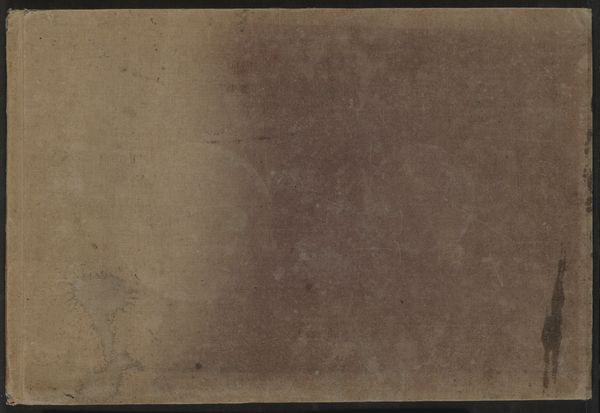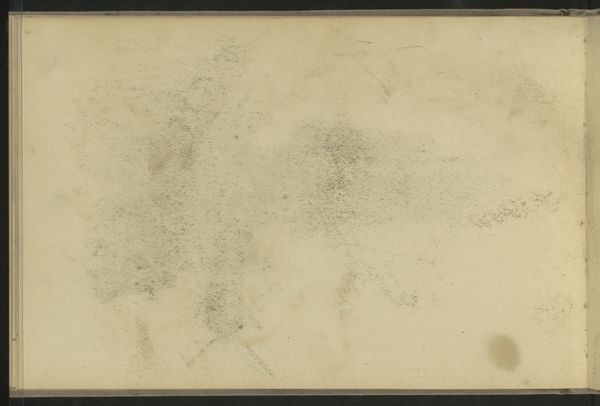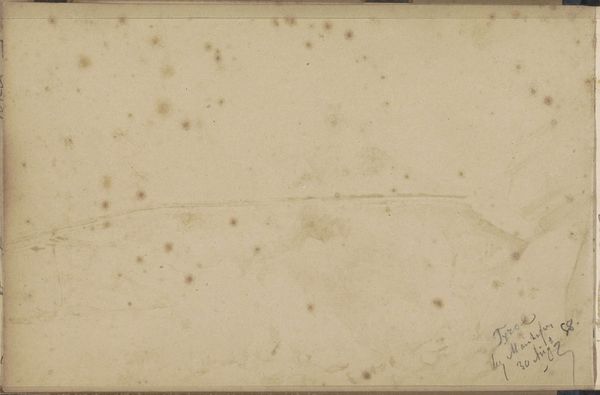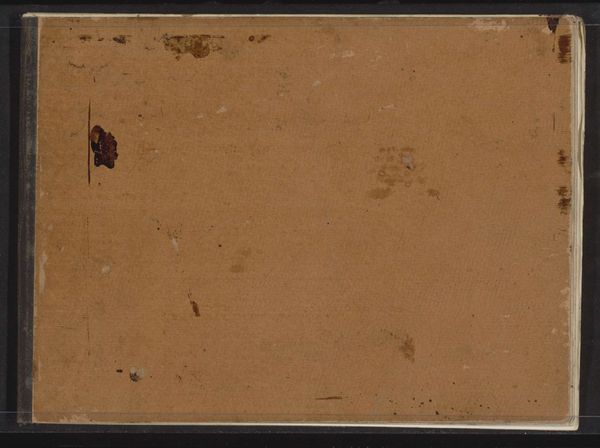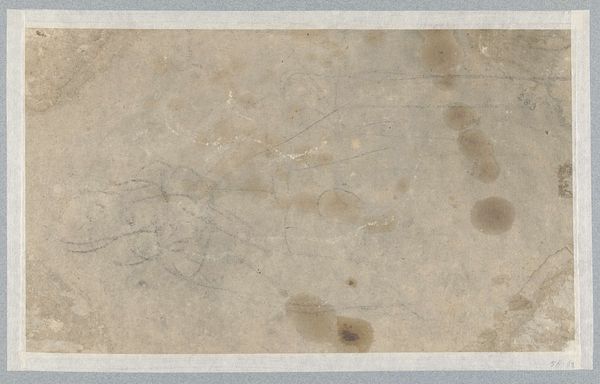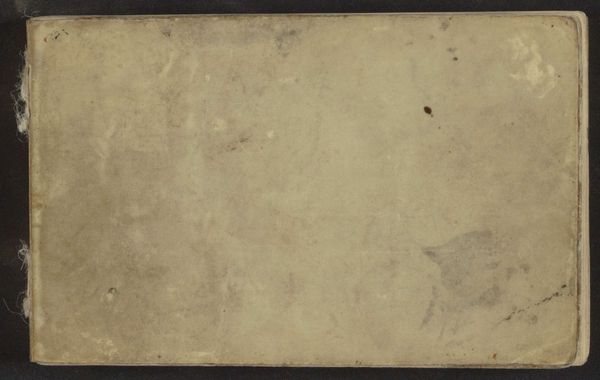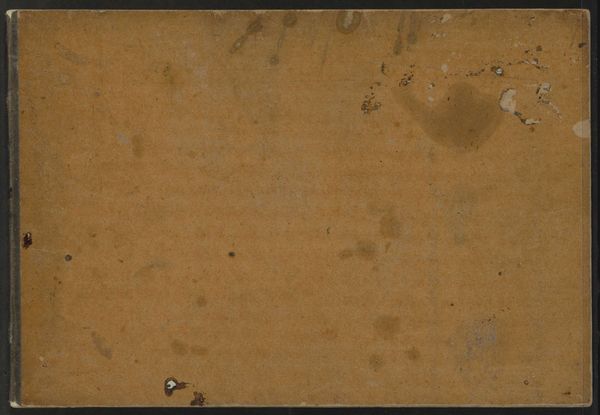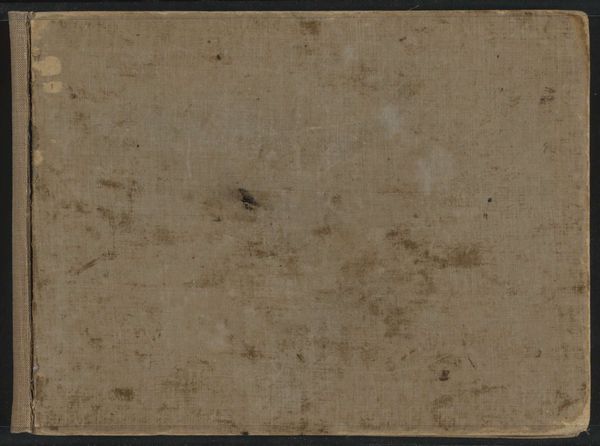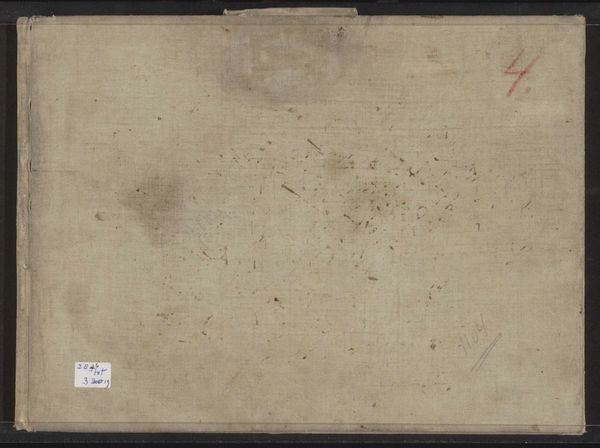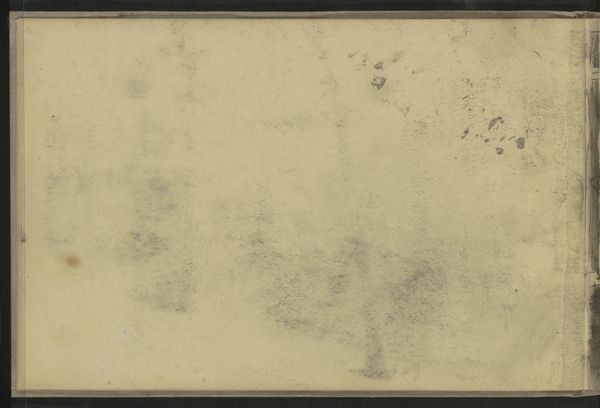
drawing, paper
#
drawing
#
paper
Dimensions: height 135 mm, width 162 mm, thickness 4 mm, width 326 mm
Copyright: Rijks Museum: Open Domain
Curator: Here we have a sketchbook with 12 leaves, attributed to Willem Witsen and dating from approximately 1915 to 1920. It’s currently held at the Rijksmuseum. Editor: Oh, it looks... well, like it's been loved and lived with, you know? Kind of scuffed and stained – tells a story even before you open it. A working artist's companion, no doubt. I wonder what secrets are held within. Curator: Indeed. These visual cues point to the materials used and their age—the specific type of paper, binding, and probable drawing media speak directly to artistic labor and cost during this time. The paper would have been chosen not just for texture but also for affordability and availability. Editor: Right, practicalities of the craft. I see those smudges and feel Witsen flipping through it, capturing fleeting moments, perhaps in a train or at a cafe. It's more intimate than a grand painting. Curator: Absolutely. We see this object as a container, its existence bound to particular trades: paper-making, binding, distribution. And these production processes were very stratified. Think about the role of women in early paper production. These sketchbooks relied on very specific economies. Editor: Fascinating. It invites daydreaming, connecting to Witsen as a person, you know? Not just as a 'Witsen,' the artist, but someone making choices within the confines of wartime materials. Was it hard to come by paper? Did he sketch furtively or openly? Each stain feels like a trace of him. Curator: War profoundly shifted production methods, altering artistic practices in all manner of mundane yet influential ways. He likely sketched subjects tied to his location and access... Editor: Like glimpsing his private world. It sparks that urge to create, to stain your own sketchbook. Perhaps this audio segment ends with a call to, "Go forth and scuff up a sketchbook!" Curator: The journey of these materials, from source to artist to the museum, illustrates the networks and hierarchies involved in creating and preserving art. Its worn surfaces offer us an explicit material history of art making in the early 20th century. Editor: Right then, ready to go find my own adventure-worn looking sketchbook!
Comments
No comments
Be the first to comment and join the conversation on the ultimate creative platform.
